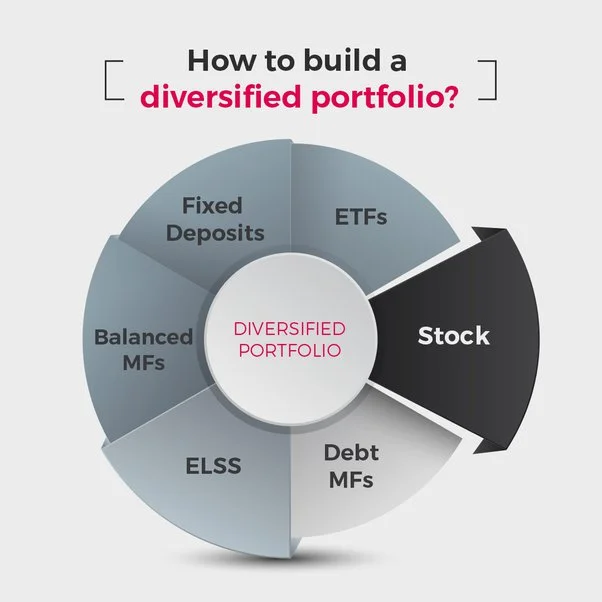Blockchain technology has emerged as one of the most transformative innovations in the financial sector. Initially popularized by Bitcoin, blockchain’s underlying technology has shown potential far beyond cryptocurrencies. Its ability to provide transparency, security, and efficiency makes it a powerful tool for revolutionizing financial systems. This article delves into the future of blockchain in finance, exploring its current applications, potential developments, challenges, and the transformative impact it could have on the financial industry.
Contents
- 1 Understanding Blockchain Technology
- 2 Key Features of Blockchain
- 3 Current Applications of Blockchain in Finance
- 4 Smart Contracts
- 5 Decentralized Finance (DeFi)
- 6 Cross-Border Payments
- 7 Supply Chain Finance
- 8 Potential Developments in Blockchain Technology
- 9 Integration with Traditional Financial Systems
- 10 Central Bank Digital Currencies (CBDCs)
- 11 Regulatory Frameworks
- 12 Challenges Facing Blockchain Adoption in Finance
- 13 Regulatory Challenges
- 14 Adoption Challenges
- 15 The Transformative Impact of Blockchain on Finance
- 16 Enhanced Transparency
- 17 Financial Inclusion
- 18 New Business Models
- 19 Case Studies: Blockchain in Action
Understanding Blockchain Technology
What is Blockchain?
Blockchain is a decentralized, distributed ledger technology that records transactions across multiple computers. These records, or “blocks,” are linked together in a chronological “chain,” making the data immutable and tamper-proof. Each block contains a cryptographic hash of the previous block, a timestamp, and transaction data. This structure ensures that once data is recorded, it cannot be altered retroactively without altering all subsequent blocks, which requires consensus from the network majority.
Key Features of Blockchain
Decentralization: Unlike traditional centralized systems where a single entity controls the database, blockchain operates on a peer-to-peer network, eliminating the need for intermediaries.
Transparency: All transactions are recorded on a public ledger, allowing anyone to verify and audit the data.
Security: Cryptographic techniques ensure the integrity and security of data, making it highly resistant to fraud and hacking.
Immutability: Once data is added to the blockchain, it cannot be changed, providing a reliable and tamper-proof record.
Consensus Mechanisms: Blockchain networks use consensus algorithms (like Proof of Work or Proof of Stake) to agree on the validity of transactions, ensuring trust without central authorities.
Current Applications of Blockchain in Finance
Cryptocurrencies
The most well-known application of blockchain technology is cryptocurrencies. Bitcoin, the first cryptocurrency, was created to provide a decentralized form of digital cash. Since then, thousands of cryptocurrencies have been developed, each with unique features and use cases. Cryptocurrencies enable peer-to-peer transactions without intermediaries, reducing transaction fees and increasing accessibility.
Smart Contracts
Smart contracts are self-executing contracts with the terms of the agreement directly written into code. They automatically execute and enforce contractual agreements when predefined conditions are met. Ethereum popularized smart contracts, enabling developers to build decentralized applications (dApps) on its platform. In finance, smart contracts can automate processes like loan agreements, insurance claims, and complex financial derivatives, reducing the need for intermediaries and increasing efficiency.
Decentralized Finance (DeFi)
DeFi refers to a broad range of financial services built on blockchain technology that operate without traditional intermediaries like banks or brokers. DeFi platforms offer services such as lending, borrowing, trading, and investing in a decentralized manner. By using smart contracts, DeFi platforms can provide these services more efficiently, transparently, and with lower fees compared to traditional financial institutions.
Cross-Border Payments
Traditional cross-border payment systems are often slow, expensive, and opaque. Blockchain technology can significantly improve this process by providing faster, cheaper, and more transparent transactions. Companies like Ripple use blockchain to facilitate real-time cross-border payments, reducing the reliance on correspondent banks and cutting down transaction times from days to seconds.
Supply Chain Finance
Blockchain’s transparency and immutability make it an ideal solution for supply chain finance. By recording every step of the supply chain on a blockchain, stakeholders can verify the authenticity of goods, track shipments, and ensure compliance with regulations. This increased transparency can reduce fraud, streamline processes, and improve trust among participants.
Potential Developments in Blockchain Technology
Scalability Solutions
One of the biggest challenges facing blockchain technology is scalability. As the number of transactions increases, so does the demand on the network, leading to slower transaction times and higher fees. Several solutions are being developed to address this issue:
Layer 2 Solutions: Technologies like the Lightning Network for Bitcoin and Plasma for Ethereum aim to increase transaction throughput by handling transactions off-chain and settling them on the main blockchain.
Sharding: Sharding divides the blockchain into smaller, manageable pieces called shards, each capable of processing its transactions. This parallel processing can significantly increase the network’s capacity.
Consensus Mechanisms: New consensus mechanisms, such as Proof of Stake (PoS) and Delegated Proof of Stake (DPoS), are being developed to replace energy-intensive Proof of Work (PoW) and improve scalability.
Integration with Traditional Financial Systems
For blockchain technology to achieve widespread adoption, it must integrate seamlessly with existing financial systems. This integration requires collaboration between blockchain developers, financial institutions, and regulatory bodies. Efforts are underway to develop interoperable standards and protocols that allow blockchain networks to communicate with traditional systems, enabling smoother transactions and data sharing.
Central Bank Digital Currencies (CBDCs)
Central banks worldwide are exploring the issuance of digital currencies, known as CBDCs. These digital currencies would be based on blockchain or similar distributed ledger technologies, providing a secure and efficient means of conducting transactions. CBDCs could offer the benefits of cryptocurrencies, such as faster payments and lower costs, while maintaining the stability and trust of traditional fiat currencies. The development and implementation of CBDCs could significantly impact the financial landscape, potentially replacing physical cash and improving monetary policy.
Regulatory Frameworks
The regulatory environment surrounding blockchain and cryptocurrencies is still evolving. Clear and consistent regulations are essential to foster innovation while protecting consumers and maintaining financial stability. Governments and regulatory bodies worldwide are working to develop frameworks that balance these objectives. These regulations will play a crucial role in determining the future trajectory of blockchain technology in finance.
Challenges Facing Blockchain Adoption in Finance
Technical Challenges
Scalability: As mentioned earlier, scalability remains a significant hurdle for blockchain technology. Solutions like sharding and Layer 2 protocols are promising but are still in development and testing phases.
Interoperability: Different blockchain networks often operate in isolation, limiting their ability to communicate and share data. Developing interoperable standards and protocols is crucial for widespread adoption.
Energy Consumption: Proof of Work (PoW) consensus mechanisms, used by Bitcoin and other cryptocurrencies, require significant computational power and energy. Transitioning to more energy-efficient consensus mechanisms is necessary for sustainable growth.
Regulatory Challenges
Compliance: Blockchain technology must comply with existing financial regulations, including Anti-Money Laundering (AML) and Know Your Customer (KYC) requirements. Implementing these regulations in a decentralized system can be complex.
Legal Uncertainty: The legal status of cryptocurrencies and blockchain-based assets varies across jurisdictions, creating uncertainty for investors and businesses. Clear and consistent regulations are needed to provide legal certainty and encourage adoption.
Consumer Protection: Protecting consumers from fraud, hacking, and other risks associated with blockchain technology is a priority for regulators. Developing robust security measures and regulatory frameworks is essential to address these concerns.
Adoption Challenges
Awareness and Understanding: Many people, including financial professionals, lack a deep understanding of blockchain technology and its potential benefits. Education and awareness campaigns are necessary to promote adoption.
Integration with Legacy Systems: Financial institutions have invested heavily in existing infrastructure. Integrating blockchain technology with legacy systems can be costly and complex.
Trust and Security: While blockchain technology is inherently secure, high-profile hacks and scams in the cryptocurrency space have eroded trust. Ensuring robust security measures and building trust with consumers and businesses is crucial for adoption.
The Transformative Impact of Blockchain on Finance
Increased Efficiency
Blockchain technology can significantly increase the efficiency of financial transactions by reducing the need for intermediaries and automating processes through smart contracts. This increased efficiency can lower transaction costs, reduce settlement times, and streamline operations, benefiting both consumers and businesses.
Enhanced Transparency
The transparency of blockchain technology can improve trust and accountability in financial systems. All transactions are recorded on a public ledger, allowing for real-time auditing and verification. This transparency can reduce fraud, enhance regulatory compliance, and improve the overall integrity of financial systems.
Financial Inclusion
Blockchain technology has the potential to increase financial inclusion by providing access to financial services for the unbanked and underbanked populations. By reducing reliance on traditional financial institutions, blockchain can offer more accessible and affordable financial services, such as digital wallets, microloans, and cross-border payments.
New Business Models
Blockchain technology can enable new business models and revenue streams in the financial sector. For example, decentralized finance (DeFi) platforms can offer innovative financial products and services, such as yield farming, staking, and decentralized exchanges. Additionally, tokenization of assets can create new investment opportunities and liquidity for traditionally illiquid assets, such as real estate and art.
Case Studies: Blockchain in Action
JPMorgan Chase: JPM Coin
JPMorgan Chase, one of the largest banks in the world, has developed its digital currency called JPM Coin. JPM Coin is a stablecoin pegged to the US dollar and is used to facilitate real-time cross-border payments and settlements between institutional clients. The use of blockchain technology allows for faster and more efficient transactions compared to traditional methods.
IBM and Maersk: TradeLens
TradeLens is a blockchain-based supply chain platform developed by IBM and Maersk. It provides end-to-end visibility and transparency in the shipping industry by recording every step of the supply chain on a blockchain. This increased transparency reduces delays, fraud, and inefficiencies, improving the overall efficiency of global trade.
DeFi Platforms: Uniswap
Uniswap is a decentralized exchange (DEX) built on the Ethereum blockchain. It allows users to trade cryptocurrencies directly from their wallets without the need for a centralized exchange. Uniswap uses an automated market maker (AMM) model to provide liquidity, enabling seamless and permissionless trading. The success of Uniswap and other DeFi platforms demonstrates the potential of blockchain technology to disrupt traditional financial services.
The future of blockchain in finance is promising, with the potential to revolutionize the industry by increasing efficiency, transparency, and financial inclusion. While there are significant challenges to overcome


